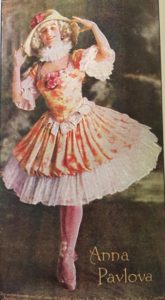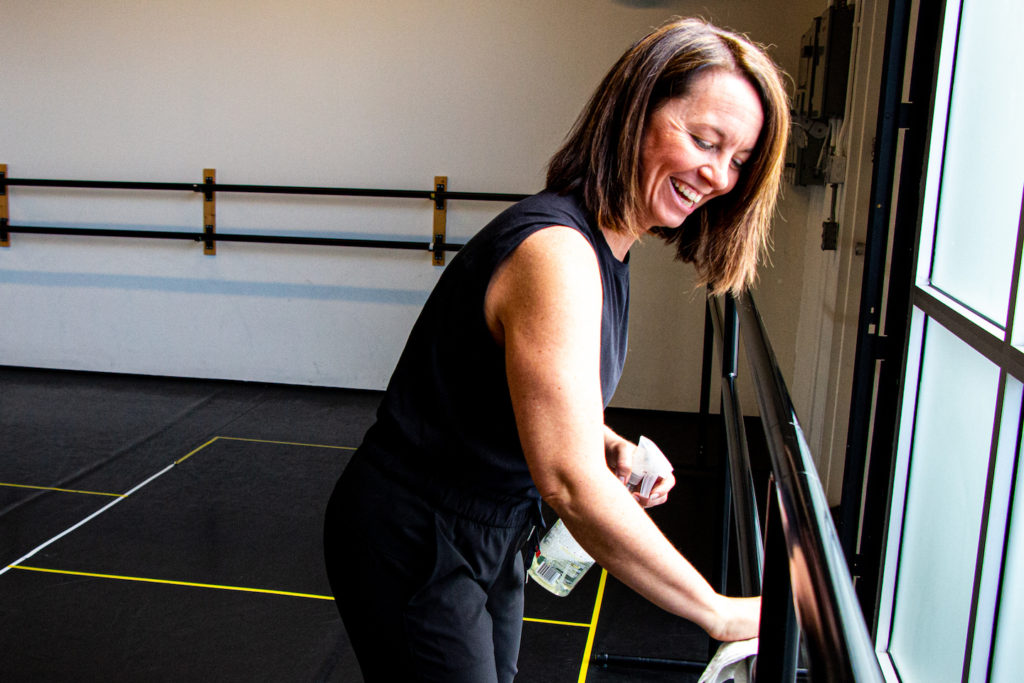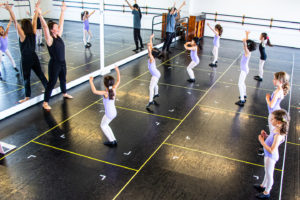Creative Solutions: Small dance studios adapt to challenging times - Vancouver Ballet Society
- Home
- Features 2020 - 2023
- Creative Solutions: Small dance studios adapt to challenging times

By Rebecca Karpus
A young dancer prepares for class: tights on, bun made, shoes handy. After a brief warm-up of her own, she is ready to begin. She clicks “join meeting,” waits for her teacher and fellow students to appear on the screen, and places her hand on her kitchen counter “barre.” This is the reality of ballet class for many during the COVID-19 pandemic. Clearly, physical distancing has greatly impacted how dance studios offer classes in these challenging times.
While all performing arts organizations are affected by the virus, small dance studios are dealing with their own set of issues, due to the inherently hands-on experience of dance training and the limited infrastructure many small businesses possess. During the early stages of the pandemic, many studios quickly moved their classes online using a virtual conferencing platform. Some successfully ran a full schedule of online classes, while others struggled technologically and financially. However, similar issues emerged for all.
Under normal circumstances, class brings dancers together into one focused space. With interactive online classes, the teacher and fellow students inevitably get a glimpse into participants’ home and family life. One thing that became evident was that some students have actual home studios — equipped with marley flooring, barres and mirrors – while others have to improvise a small square of space wherever they can.

This is one of the reasons why Erin McNeill, artistic director of Vancouver’s Pacific Dance Arts, chose not to run her own interactive online classes. Instead, she provided students with links to optional online classes from professional companies. She also devised her own creative projects, such as having students recreate historical dance photos, including classic images of Anna Pavlova and the famous Sun King portrait of Louis XIV.
Another unique online project was devised by Rishell O’Brien, owner of Defy Gravity Dance Company in Richmond. In place of the dance competition stimulus ordinarily occurring in the spring, O’Brien created a choreography challenge in which participants submitted videos of their at-home choreography incorporating a chair as a prop.
Providing these kinds of opportunities was not a simple task, and added one more demand to the virtual teaching small studios had to suddenly offer. With the academic school day temporarily shifting to an online platform as well, how much screen time can students manage? At what point does screen time become too much for body and mind?
These are the kinds of questions posed by Cori Caulfield, owner of Port Moody’s Caulfield School of Dance. Yet, Caulfield recognizes the benefits of online classes: apart from the joy of bringing dance to students during the crisis, she says that her students focused a great deal on stretches and other fundamentals. She found this adaptive training resulted in stronger extensions, and more refined port de bras in ballet, and curves and contractions in contemporary. Finally, without the live classroom motivation, a sense of independence and accountability was required by students more than ever — something that is unquestionably required of a professional. Despite the emotional toll of abruptly leaving the studio and having to initiate and build an online platform, on the plus side, a modified method of teaching may have emerged for long-term use. Some teachers remarked that they learned to shift away from the usual physical cues and toward a more language-based approach to improve the online experience. This teaching style may offer an energy-efficient model to help sustain teachers over long hours and careers.
As of late June, most dance studios in Vancouver and the surrounding areas had opened with strict safety protocols in place, including taped distance markers on studio floors, an augmented cleaning regime, a tweaked schedule to avoid crowding, and separate entrances and exits. Needless to say, it has been an unprecedented undertaking to recreate what was previously known as a “safe space” or even “second home” for young dancers.

Despite reopening, some owners now worry about the interest in live classes in general. With the sudden surge of online classes and tutorials, some of which are led by professional companies and industry celebrities, will some families begin to rely less on their local studio? Other studio owners considered the current wave of online content a treasured opportunity. When else might their dancers get a chance to take class with the Royal Danish Ballet?
Many studios have delayed fall registration in anticipation of further government guidelines over safe operating procedures and, in the meantime, are picking up the pieces of cancelled and postponed performances and events. O’Brien stresses that thinking outside the box is key to planning for the future. Defy Gravity, for example, is wrapping up their 2019-2020 season this summer with plans to livestream their competitive program recital and arrange a drive-in style parking lot recital for recreational students. On top of the regular fall schedule, O’Brien is leveraging the virtual platform she meticulously developed, adding ongoing online classes for those who have difficulties getting to a studio or learning in a traditional setting.
Considering the multitude of challenges the dance world is currently facing, and the uncertain future, Jennifer Hill, owner of Port Coquitlam’s Simply Ballet, strives to be flexible and innovative in her approach to equip dancers for professional careers. She fondly reflects on her past dance career, performing for packed houses, and sincerely hopes that similar opportunities will be available to the next generation.
Such thoughts are felt among many, but there is also a shared belief that dance studios can offer a glimmer of hope. Even while reflecting sadly on the costumes and choreography that never made it to the stage after the lockdown, Caulfield is optimistic for the future. She notes that studios not only contribute to physical health, but they also “play a vital role in our communities by positively occupying children’s minds.” If, at the root, they do share these common goals of physical and mental health, then it is critical for dance studios to come together at this time to support one another, gain resources and knowledge together, and come out on the other side, dancing together.

